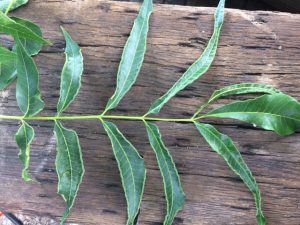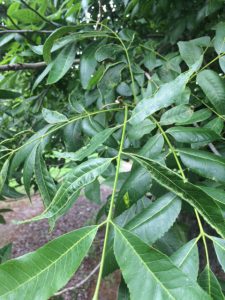With 10 successive days of rain behind us and no relief in site and a potential tropical storm bearing down on us, pecan growers are under the gun for scab pressure right now. Most days have provided some breaks in the rain showers that have allowed growers to get out and spray at least a portion of their acreage. But, the question is what to spray with when growers can get into the orchard.
We are currently transitioning from worrying about leaf scab as the leaves should be hardening off soon to worrying about nut scab as the nuts begin the sizing period. One of the best materials to be using at this stage with the pressure we are having would be one of the DMI/Strobi mixes (Group 3 + Group 11) like Absolute or Quadris Top if you have not used them 2 or 3 times already. The problem we are running into is that most growers are coming off of spraying this chemistry in their last couple of sprays. If this is the case, what should growers go to at this point?
The answer would largely depend on what has been used already but in the scenario above—if you have already used a couple of group 3 & 11 mixes—you have a few options. The right choice will probably depend on variety.
For moderately susceptible varieties like Sumner, Stuart, Schley, Oconee, etc. you could go with something like a 2 qt rate of Phosphite alone or a group 3 fungicide (Tebuconazol, Propiconazol, Tetraconazol, etc.) + either Phosphite or Tin
For highly susceptible varieties like Desirable, Pawnee, Caddo, Cunard, a better option would be something like 25 oz Elast and 1 qt of Phosphite.
Regardless of what you use, it is probably a good idea to tighten that spray window to 10 days minimum on scab susceptible varieties.
We have also had a number of calls about leaves curling at the edges a seen in the photo below:
This is a result of feeding by pecan leaf roll mite. Their feeding causes galls at the outer margin of the leaflet, which causes the edges to curl up and sometimes turn brown. This distorts the leaflet but does not usually cause defoliation. Most of the time this damage is only cosmetic and does not require treatment.


